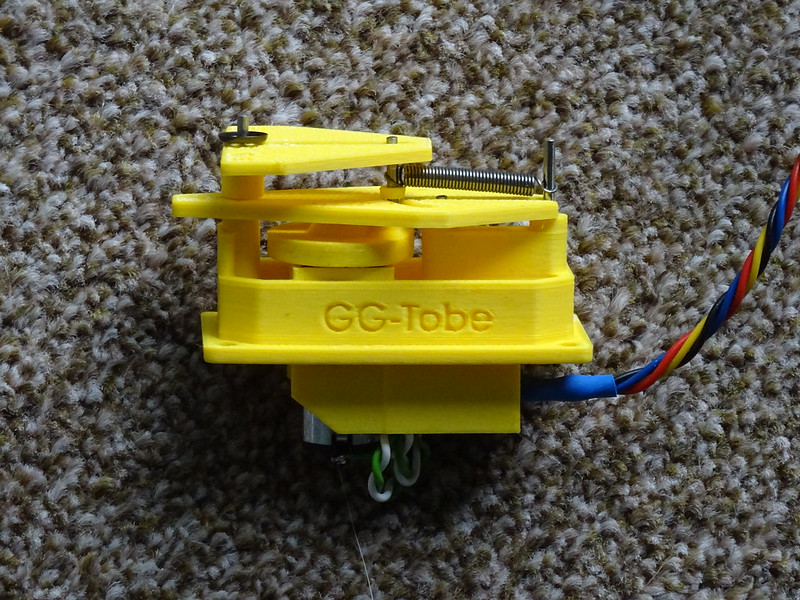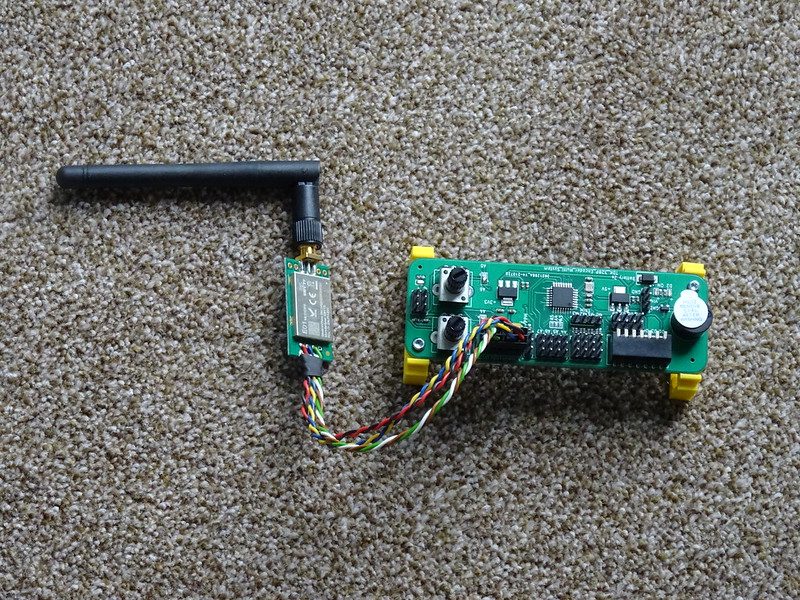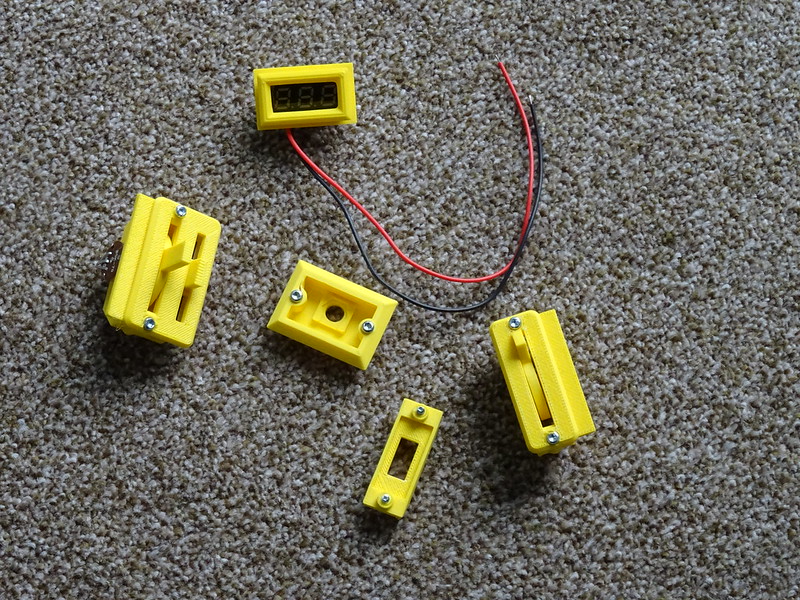As many of you will know, I was fortunate enough to win Tobe's MaxiPelle GG outfit, which he offered as a sweepstake prize following Ponty this year. A nicely packaged box arrived from Sweden a few days later, but on opening it up I was absolutely gob-smacked! Not only did it contain the MaxiPelle GG outfit, but a selection of receivers and servos - indeed enough bits to build a complete additional system!
Posting this initial review got delayed a little, as being keen to get it up and running (alright, have a good play with it!
First up, a very nice looking transmitter:
 DSC00683 by Peter Christy, on Flickr
DSC00683 by Peter Christy, on FlickrI do love Swedish minimalist design!
The transmitter appears to be 6 channel, but only four are connected at present. Channels 1 & 2 are rudder and elevator. Channel 3 is a progressive throttle, controlled by the two push buttons. Channel 4 is a proportional throttle channel (as an alternative) controlled by the "trim" slider nearest the on-off switch. Like me again, Tobe has put the elevator trim nearest the edge of the case, where it is much easier to reach with the right thumb!
The system came with three six channel and two four channel receivers:
 DSC00684 by Peter Christy, on Flickr
DSC00684 by Peter Christy, on Flickr DSC00686 by Peter Christy, on Flickr
DSC00686 by Peter Christy, on FlickrTwo of the six channel receivers came with wire whisker aerials, and one with a PCB type. One receiver has the servo connectors projecting from the end of the case, whilst the others are vertical. Similarly, the two four channel receivers have alternative connection configurations.
All the receivers are very small! Much smaller than the old "MiniMac" single channel receivers that many older modellers will remember with affection! (Still got mine, still works!)
Next there are the servos. First up is a GG servo, clearly inspired by the Rand actuator:
 DSC00688 by Peter Christy, on Flickr
DSC00688 by Peter Christy, on FlickrVery neat! It also contains a re-coder / amplifier enabling it to operate with any conventional receiver and provide flapping rudder and elevator controls (Galloping Ghost). It seems to be smaller than I recall the Rand device being.
Also in the box were some "Pulse" servos - a two servo "brick" and a single servo.
 DSC00689 by Peter Christy, on Flickr
DSC00689 by Peter Christy, on FlickrThese are spring-centred, open-loop servos (no feedback pot) and come complete with the built in re-coder / amplifiers to enable them to work with any standard receiver. The servos "wiggle" in use. One of the most reliable of the early American proportional sets was the DB Quadruplex, which operated in just this manner, using Graupner Bellamatic servos. The Bellamatic was a spring centred servo, which made it ideal for early pulse proportional systems, and Tobe's servos operate in a very similar manner. With these servos it would be very easy to replicate a DB Quadruplex controlling aileron, elevator and rudder, with an ESC for throttle.
The final servo(s) is another two channel "brick", but this time fully proportional feedback servos of Tobe's own design. These are very neat and light - perfect for small models!
 DSC00690 by Peter Christy, on Flickr
DSC00690 by Peter Christy, on FlickrBut there's more!
The box also contained a spare encoder and RF board:
 DSC00692 by Peter Christy, on Flickr
DSC00692 by Peter Christy, on FlickrDigging deeper into the packing I discovered this:
 DSC00693 by Peter Christy, on Flickr
DSC00693 by Peter Christy, on Flickr DSC00694 by Peter Christy, on Flickr
DSC00694 by Peter Christy, on FlickrA complete triple-axis stick unit! Clearly something else for which Tobe and I share an affection! My aerobatic models are now flown exclusively with a single-stick transmitter, which I much prefer for that application over twin-sticks! Looks like I'll soon have another tranny to use for this!
There was also a bag containing an assortment of trim levers, auxiliary control levers, a voltmeter and the mounting plate for the nRF module. In short, enough bits to build another transmitter!
 DSC00695 by Peter Christy, on Flickr
DSC00695 by Peter Christy, on FlickrThe amount of work that has gone into creating - and 3D printing - these parts is staggering. The quality is superb. If you close your eyes, the sticks feel like a professionally manufactured system, not a home-built. They look good, too!
Quite honestly, I feel completely overwhelmed by Tobe's generosity in offering this prize. It would have been excellent if it had just been the transmitter and receiver, but to get all these extras as well is beyond belief!
Thank you so much, Tobe!
--
Pete